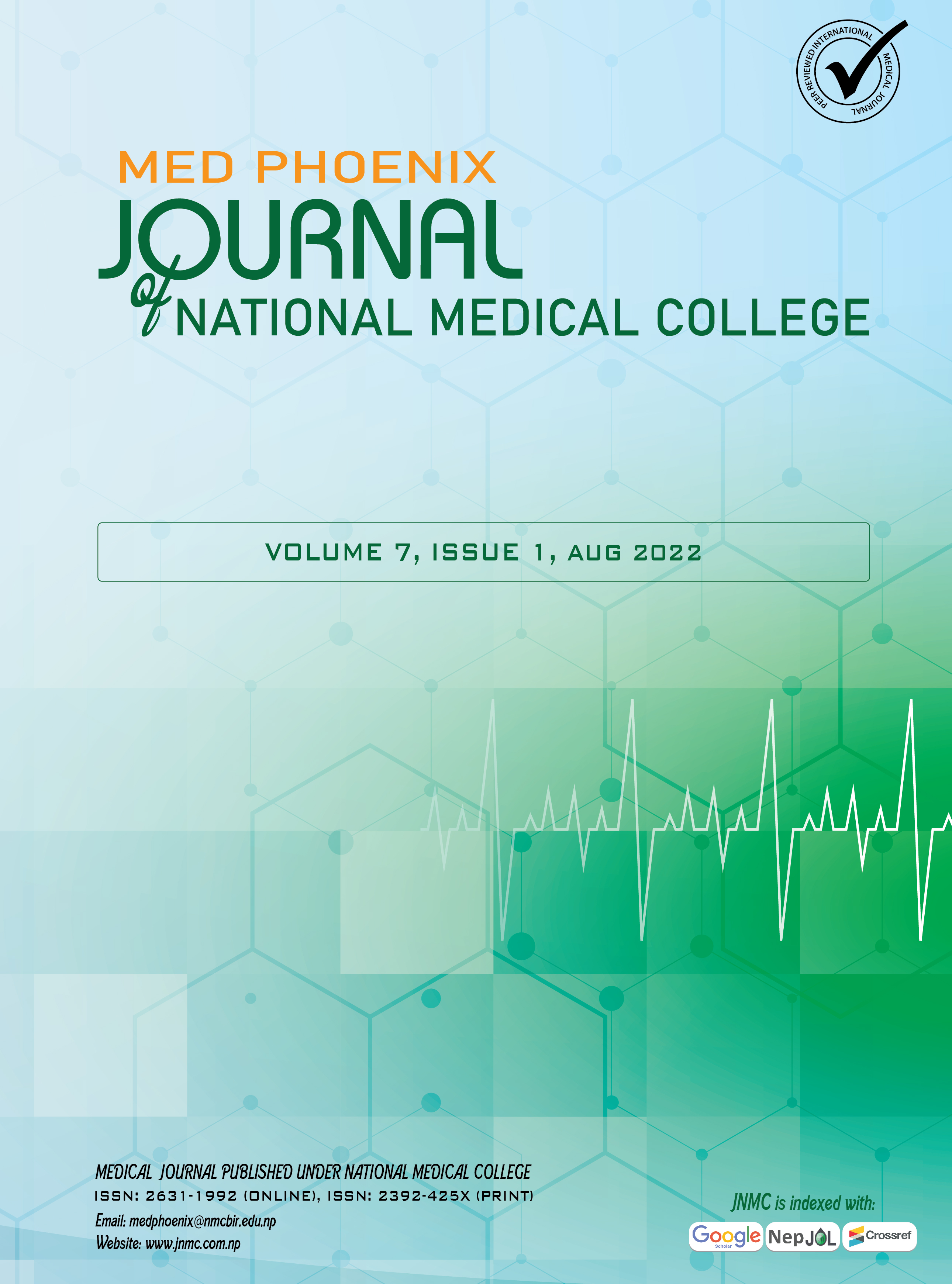Outcomes of Percutaneous Nephrolithotomy in a Tertiary Care Hospital
DOI:
https://doi.org/10.3126/medphoenix.v7i1.46345Keywords:
Outcome, PCNL, Renal stoneAbstract
Introduction: Percutaneous nephrolithotomy (PCNL) is the gold standard first-line treatment for renal stones. It a successful, less invasive surgery (> 90%) but with high complication rate (> 10%). The study aims to see the outcome of PCNL in patients with renal stone who were treated.
Materials and Methods: A retrospective study which included all the cases that presented with renal stone and who underwent PCNL for the treatment. The data included in this study was from April 2019 to December 2021. Ethical clearance was obtained from the institutional Review Committee (F-NMC/578/078-079). The data were collected from the records available in the record section We evaluated the distribution of presentation, puncture site, stone clearance, blood loss, postoperative stenting and complications of the surgery.
Results: The total of 63 cases underwent PCNL in our institute. The mean age of the patients was 34.68±14.108 years and mean size of the stone was 5.7531±18.07804 cm3. Among the total cases, 52% cases presented with renal stone on the left kidney, 54% presents in the pelvic ureteric junction. In 71% cases puncture was made in the lower pole and in 63.5% single puncture was made to proceed. Complete clearance of stone was seen in 94% cases, 4.8% developed urosepsis and 6.3% required blood transfusion. Stenting was done postoperatively in 95% cases.
Conclusion: The total stone clearance rate in our study was 94% which higher when compared to other study. With the increase in case flow the efficacy of the procedure will increase and along with this the outcome of the procedure will increase.
Downloads
Downloads
Published
How to Cite
Issue
Section
License
Copyright (c) 2022 Med Phoenix

This work is licensed under a Creative Commons Attribution 4.0 International License.
This license enables reusers to distribute, remix, adapt, and build upon the material in any medium or format, so long as attribution is given to the creator.
Copyright on any research article is transferred in full to MED PHOENIX upon publication. The copyright transfer includes the right to reproduce and distribute the article in any form of reproduction (printing, electronic media or any other form).




